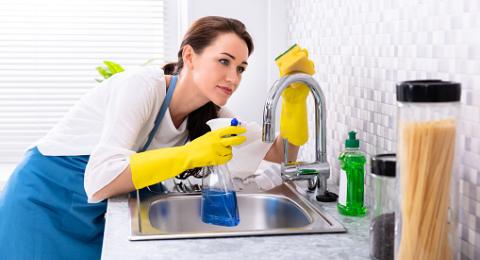Spring
cleaning season is on the way. A time of year where Canadians turn their homes
upside down, this is a huge opportunity to tackle mould. If mould is discovered,
removing it is hugely important. Why? Because this fungus exposes residents to a
variety of health risks. Here’s all you need to know about mould.
What is mould and how does it form?
Mould is a naturally occurring fungus that looks like a dark smudge or stain. Smelling musty, it grows indoors and out. Types include mildew, yeast and mushrooms, and all are especially hazardous inside homes. Mould grows indoors due to condensation,
flooding, high humidity, and water leaks. Ultimately, mould grows in damp, wet, and poorly ventilated spaces.
How dangerous is mould?
Firstly, some moulds are more dangerous than others. Secondly, mould exposure causes different reactions in different people. Essentially, allergy sufferers are the most susceptible to health risks. Mould releases spores that are breathed in everyday. It’s most dangerous when growing excessively in “amplification sites”
around the home. Mould spores spread throughout homes due to “Stack Effect”. This is when warm air rises and exits through the upper levels and attic.
What mould health risks exist?
If
you ignore excessive mould build-up in your home, health risks include:
- Eye, nose, and throat irritation
- Coughing and phlegm build-up
- Wheezing and shortness of breath
- Asthma symptoms
- Allergic reactions
Where does mould growth occur most?
Mould needs moisture, oxygen, warmth, and darkness to grow. In other words, your home is the perfect environment for it to spread. Essentially, mould forms anywhere that water can be found, including, but not limited to:
- Showers, bathtubs, sinks, and toilets
- Bathroom walls and floors
- Windows and windowsills
- Air conditioning and heating vents
- Attics, basements, and garages
Did you know, the average Canadian home releases 10 to 50 litres of moisture everyday? Furthermore, 2,000 to 10,000 litres of moisture can be trapped in homes during a 200-day heating season1. Is it any wonder mould is such a potent threat at home?
Can I remove mould myself?
Soap and water can be used to remove everyday mould from curtains, sinks, ceilings, and other home features. For larger areas of mould on drywall, studs and subflooring, calling a professional is your safest bet.
Choose AmeriSpec for Mould Testing and Indoor Air Quality Evaluations
Our Mould Testing and Indoor Air Quality Evaluations monitor the air in your home to ensure the healthiest possible environment.
AmeriSpec has over 30 years of home inspection industry experience so you can rely on our team, every visit. Our Mould Testing and Indoor Air Quality Evaluations can help you maintain a mould-free home. Book your evaluation today.
...
Sources
1 Canada Mortgage and Housing Corporation, 2010,
Moisture and Air Quality Problems
...

